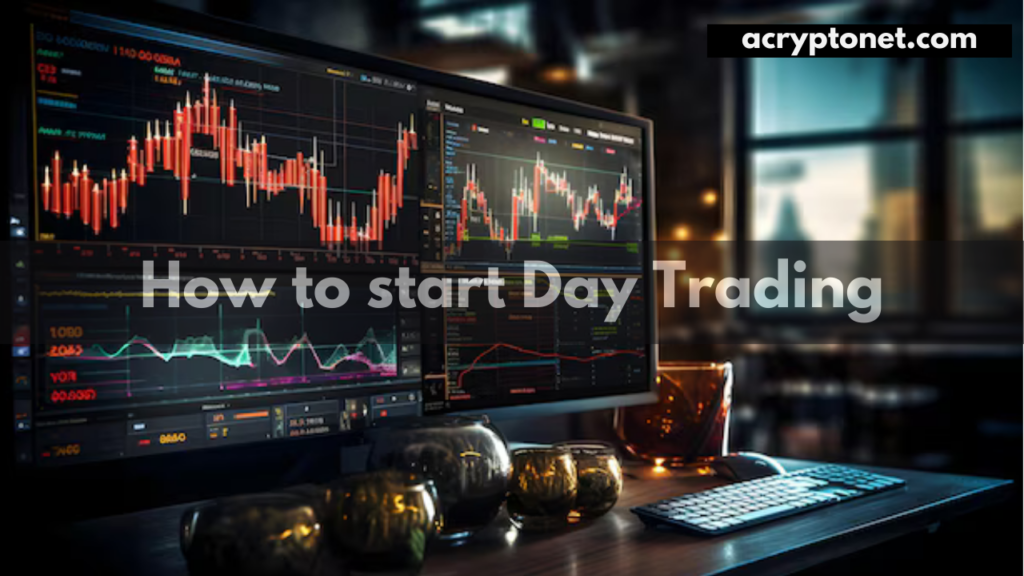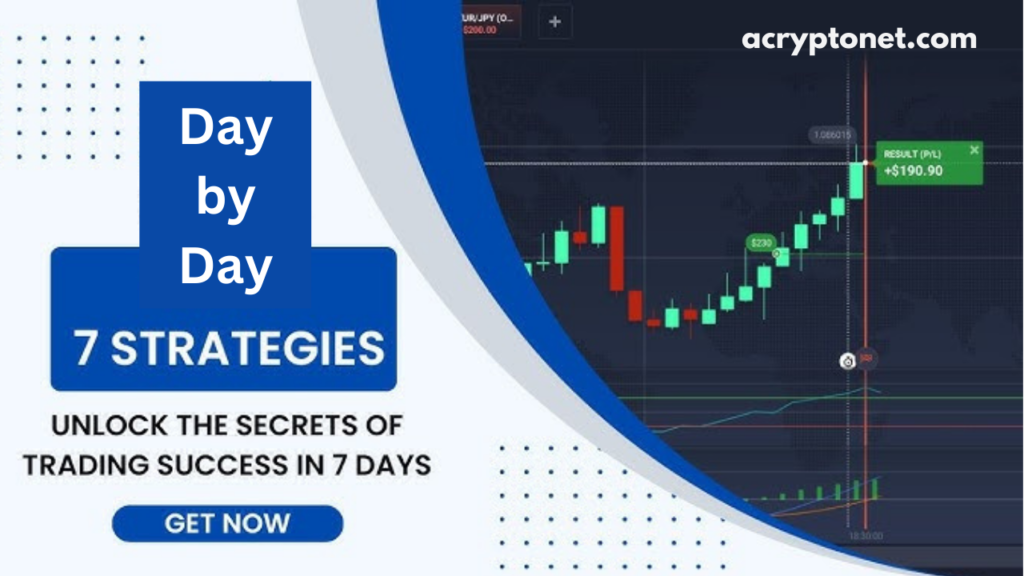Trading strategies are essential for day traders aiming to reliably profit from markets like stocks, forex, or cryptocurrencies. In a fast-paced trading climate, having a clear plan can make the difference between success and failure. Day traders utilize these strategies to recognize short-term open doors and profit by small price movements within a single trading day.
This article highlights some of the best trading strategies for Day Trading that can help maximize your potential. We’ll cover techniques like scalping, momentum trading, range trading, breakout trading, news-based trading, reversal trading, and mean reversion trading. Each has its own risks, and traders should adjust their way to deal with personal goals, market information, and risk tolerance.
Key Takeaway:
- Day trading is just profitable in the long run when traders view it in a serious way and investigate as needs be.
- Day traders should be persevering, engaged, objective, and dispassionate in their work.
- Intelligent Brokers and We bull are two suggested online brokers for day traders.
- Day traders frequently take a gander at liquidity, volatility, and volume while concluding what stocks to purchase.
- The tools that day traders use to pinpoint buying points incorporate candlestick chart patterns, trend lines and triangles, and volume.
What Is Day Trading and How Does It Work?
Day trading is the act of buying and selling the same security inside a single trading day, meaning to profit from small price movements. Unlike traditional investments, day traders stand firm on footholds for just minutes or hours, focusing on different resources like stocks, currencies, cryptos, and commodities. The essential objective is to make small, quick profits, but the high speed of the market likewise opens traders to critical risks and possible losses, making it essential to develop clear strategies.
Moreover, day trading comes with financial commitments, including transaction fees, taxes on short-term gains, and the regulatory prerequisite to keep at least $25,000 in a brokerage account. Going up against proficient traders from financial foundations adds to the challenge, making it essential for traders to be completely ready, both financially and mentally.
How to start Day Trading

To start day trading, research different Trading strategies and key concepts like technical analysis, risk management, and trading psychology. While formal education isn’t required, self-education is essential for understanding business sector elements and how traders make decisions. Use books, courses, and financial assets to construct a strong foundation and set yourself up for the fast-paced trading climate.
Once outfitted with information, develop a far reaching trading Strategy outlining your financial goals, risk tolerance, and specific strategies, including defined entry and exit points. Test your plan using a trading simulator to rehearse without risking real money. Start trading with small positions to restrict risk, maintaining discipline by consistently reviewing your performance and adjusting your strategy based on market input for long-term success.
Day to Day 7 Trading Strategies

1. Scalping
Scalping is a famous day trading strategy in All Trading Strategies that involves making handfuls or even many trades in a day, aiming for small price movements. Scalpers hold positions for just seconds or minutes, focusing on high liquidity assets like significant stocks, forex pairs, or cryptocurrencies. The thought is to accumulate small profits from each trade.
However, scalping requires an elevated degree of technical analysis and quick decision-making. Transaction costs, like commissions, can quickly add up, so traders should guarantee their profits offset these costs. Discipline and exact timing are essential to making this strategy profitable over the long term.
2. Momentum Trading
Momentum trading involves buying assets that are showing strong development in one direction and selling them when the momentum weakens. This strategy works best during economic situations driven by news, earnings reports, or broader trends. Traders use indicators like RSI and moving averages to time their entrances and exits.
A key challenge with momentum trading is timing. Entering or exiting a trade too soon or past the point of no return can result in losses, as the momentum can reverse unexpectedly. Successful momentum traders combine technical analysis with an understanding of market sentiment to make informed decisions.
3. Range Trading
Range trading focuses on identifying key help and resistance levels, buying assets near help and selling near resistance. This strategy works well in markets with low volatility, where prices will more often than not move typically within a defined range. It permits traders to profit in both upward and descending markets.
One risk of range trading is the potential for a breakout, where prices move outside the laid out range, potentially causing significant losses. Traders should remain vigilant and be ready to act quickly if a breakout happens, using stop-loss orders to minimize risks.
4. Breakout Trading
Breakout trading Strategies involves entering a position when the price moves beyond a set range, indicating the start of a new trend. Traders intend to catch significant price movements after a breakout by analyzing patterns like triangles and flags. They frequently set stop-loss orders to restrict losses if the breakout fails.
The benefit of breakout trading lies in the potential for significant profits if the trend continues. However, false breakouts — where prices quickly return to the previous range — are normal and can prompt losses. Traders should be gifted in technical analysis to differentiate between real and false breakouts.
5. News-Based Trading
News-based trading capitalizes on price movements set off by significant news events, for example, earnings reports or international developments. Traders monitor news closely and respond quickly to showcase shifts, aiming to profit from unexpected changes in price direction following a news release.
The main challenge with this strategy is speed, as markets can move quickly in response to breaking news. Furthermore, not all news influences the market as expected, so traders should remain mindful. A well-defined exit strategy is significant to avoid losses when market responses differ from forecasts.
6. Reversal Trading
Reversal trading Strategies focuses on identifying when a price trend is going to reverse direction, either from upward to descending or vice versa. Traders utilize technical indicators like MACD and RSI to recognize overbought or oversold conditions, which signal that a reversal might be imminent.
While reversal trading can be highly profitable, predicting when a reversal will happen is difficult. If the trend continues rather than reversing, traders might face significant losses. This strategy requires patience and accuracy in timing to successfully execute trades.
7. Mean Reversion Trading
Mean reversion trading is based on the possibility that asset prices in the end return to their historical averages in the wake of moving significantly in one direction. Traders search for assets that are overbought or oversold, betting that the price will return to its mean. This strategy is best in stable markets.
However, traders should be mindful when prices digress as part of a long-term trend rather than a temporary vacillation. Betting against a strong trend can result in losses. Understanding when a deviation is probably going to correct itself is key to making mean reversion trading profitable.
Final Thoughts
Trading strategies form the foundation for successful day trading, offering organized ways to deal with navigating unpredictable markets. Techniques like scalping, momentum trading, and range trading give chances to profit, but every strategy comes with its own set of risks. Discipline, technical information, and risk management are essential to guarantee predictable results.
No strategy ensures success, but developing and refining a personal trading plan improves your chances of making informed decisions. Flexibility and continuous learning are urgent in adapting to changing economic situations. With the right strategies and mindset, achieving success in day trading is possible.
Day trading is a profitable method for generating yearly returns of 200% or more, providing significant liquidity to the market. It requires self-restraint and following trading rules. The best day trading strategies can be set aside through opportunity, learning, research, and experience. These strategies can be utilized in different markets, including product prospects, crypto, and forex trading.
However, successful day traders should figure out market elements, oversee risk, and develop discipline and patience in execution. It is likewise suggested that the picked techniques be back tested before committing real money.
FAQ’s
What assets do day traders focus on?
Day traders focus on various assets that offer liquidity and volatility. Normal assets include stocks, forex (cash pairs), cryptocurrencies, commodities (like gold or oil), and market indices. These assets take into consideration regular price movements, enabling traders to find various trading potential open doors within a single day.
Is day trading risky?
Indeed, day trading conveys significant risks. The market can be highly unpredictable, and price movements can happen quickly, potentially leading to significant losses if a trader’s strategy fails. Managing risk through techniques like stop-loss orders, setting realistic goals, and not over-leveraging are critical to surviving in day trading.
What are the advantages of day trading?
The main advantages of day trading include the potential for quick profits, flexibility in working hours, and the capacity to avoid for the time being risks, as all trades are closed before the day’s over. Day trading likewise gives fervor because of the fast speed and dynamic nature of the markets.
How much money is expected to start day trading?
In the U.S., day traders are expected to maintain a minimum of $25,000 in their brokerage account because of the Pattern Day Trader (PDT) rule. This guarantees they meet margin prerequisites for continuous trades. Traders might require more capital as a pad to retain losses and make the most of trading open doors.

One Reply to “7 Powerful Day to Day Trading Strategies for Consistent Success”